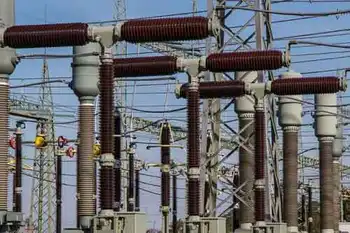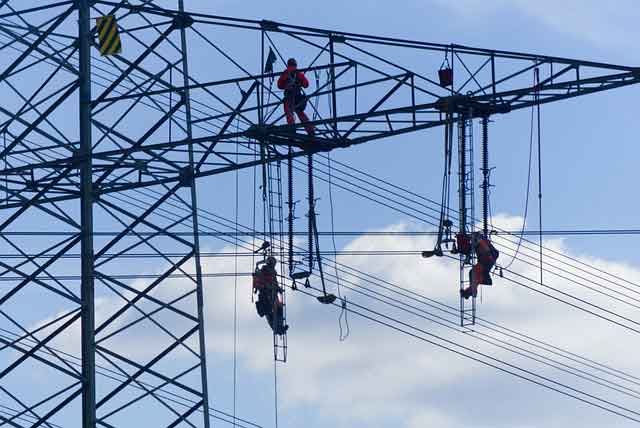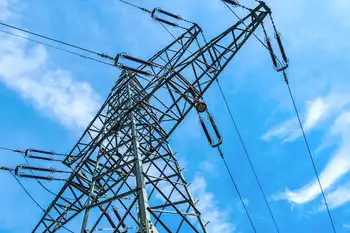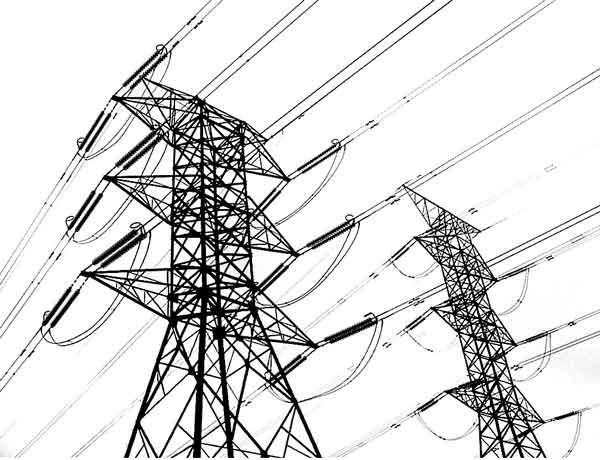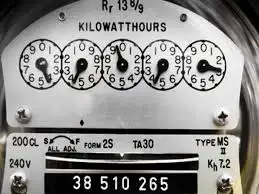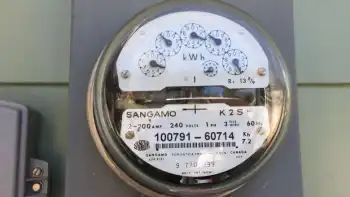Wind turbine to power auto dealer
By Columbus Dispatch
CSA Z462 Arc Flash Training - Electrical Safety Essentials
Our customized live online or in‑person group training can be delivered to your staff at your location.

- Live Online
- 6 hours Instructor-led
- Group Training Available
The Delaware city planning commission gave those efforts a boost when it agreed to allow a wind turbine to be installed on the property.
The turbine will generate enough electricity to power the showroom lights at the dealership that is being converted from Ford to Toyota, said Jay DuRivage Jr., Byers' vice president.
The ReDriven 10kw wind turbine, manufactured by ReDriven Power Inc. in Ontario, Canada, will be located at the front of the dealership, said project architect John Oney of Architectural Alliance in Columbus. The 13-foot blades will be placed on a 60-foot "monopole" that will generate 40 amps producing 24,000 kwh, enough to power the showroom lights, he said.
The turbine will rotate at no more than 12 miles per hour, Oney said. It can withstand winds of 90 mph and will be equipped with a hydraulic system allowing it to be lowered if high winds are a concern.
Any additional electricity that is generated, when the dealership is closed, will be sold back to electric suppliers in that area, he said.
Other nearby structures are the same height or taller, he said, such as the communications tower across the highway from the dealership at the Ohio State Highway Patrol building and the flagpoles on the Byers site and across the street at the Chesrown dealership.
The sound generated by the turbine working at maximum speed has been measured at 59.4 db (decibels) 23 feet away, according to ReDriven specification sheets, well within the maximum limits of 60-65 db allowed in the zoning code, said Shawn Leininger, city planning and zoning administrator. That is "well below the background noise from (U.S.) 23," he said.
The nearest residence is 400 feet away and is buffered from the dealership site by a three-foot dirt mound, a six-foot solid fence and mature trees, he said.
"Initially, we (the city staff) said no because we thought it was a gimmick, but they kept coming back with more information," Leininger told planning commission members.
City staff members also took into consideration the direction they've received from the planning commission and city council to "attract and support green projects," he said.
"What emerged from those talks is there was a legitimate case to be made for the project," said Dave Efland, city planning and community development director.
The city's zoning code regulates electricity-generating wind turbines but only in light industrial and general manufacturing districts where fields of turbines could be used to produce large amounts of electricity, he said. That leaves "a hole" in the code for smaller, single-pole turbines. The Byers site is zoned B3 community business district.
The city's zoning code authorizes Efland to approve applications for "small incidental construction" that doesn't adversely affect its surroundings, Efland said. He determined the wind turbine was not a "minor alteration" and required review and approval by the planning commission but not the city council.
Under conditions imposed by the planning commission, the wind turbine must be used to generate electricity and will replace the existing flagpole. Byers must work with the Federal Aviation Administration to meet any lighting or other requirements.
Additionally, the planning commission required that no advertising be placed on the turbine or the pole and both must be a neutral color.
Commissioner Jim Halter voted against the project, saying he liked the concept but was afraid the commission members were setting a precedent that could come back to haunt them.
He favored working on a change to the zoning code that addresses wind turbines in commercial areas before taking a vote.
Efland agreed that is something that needs to be done, but he said the process is lengthy and Byers needed to get this project done as part of the property's expansion and conversion to a Toyota dealership.
The turbine should be up by August with the dealership renovations and conversion completed by early fall, Oney said.
Also at the meeting, the commission approved a conditional use permit and development plan exemption to allow the expansion of the parking lot for St. Peter's Episcopal Church at 45 Winter St.
They also approved a final subdivision plat for Dominion Homes to allow another 19 single-family lots to be developed on 4.75 acres in the Carson Farms subdivision south of Cobblestone Drive and west of Carson Farms Boulevard.





